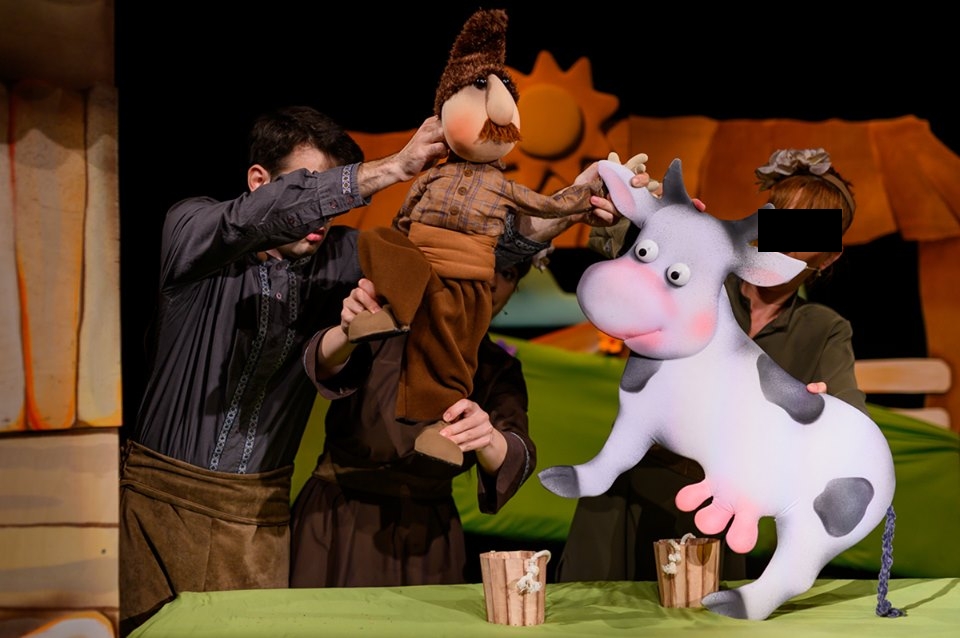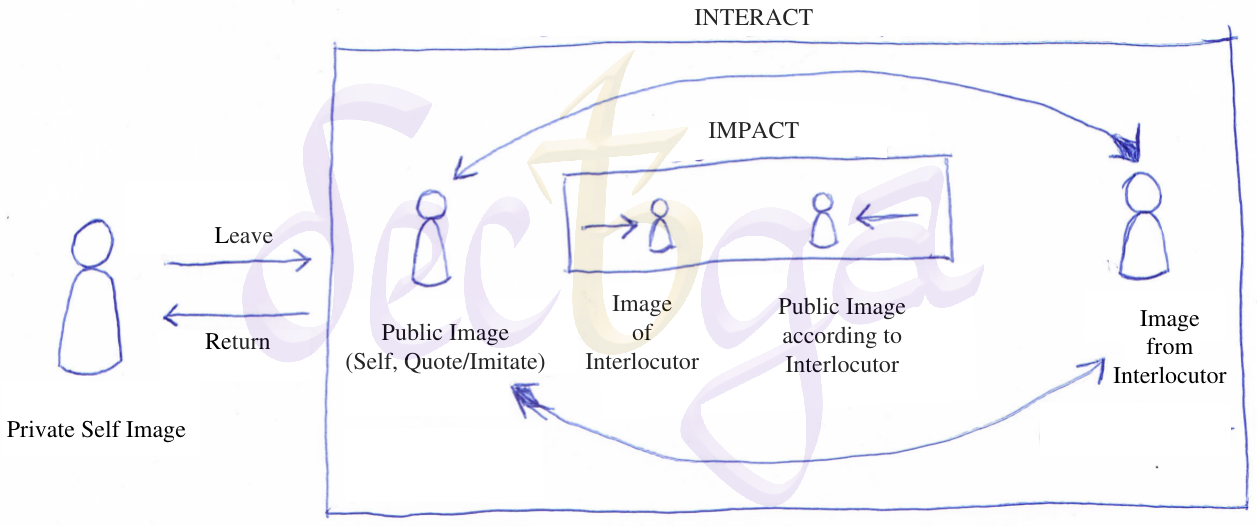What are social images in Besѣda®?
one man in his time plays many parts
by William Shakespeare
Copyright © 2025 by Aleksandar Venelinov Andonov. This work is licensed under Creative Commons Attribution-NonCommercial-ShareAlike 4.0 International.
Content
Design goal
Provide a way to coordinate social roles into existance.
Requirements
Increase clarity about the reponsibilities.
Maintain the flexibility - the mechanisms for the social images provided in Besѣda® are such that they can be used for in-situ/emergent/ad-hoc conversations.
Research
The concept of “face” was the initial line of research of one of the pioneers of microsociology - Erving Goffman. It is worth mentioning that Goffman borrowed the concept from the Chinese culture, from the term “mianzi” which has more nuance and depth than the “western” interpretation.
The source of these concepts - the Chinese culture, has a great depth about the concept of face - something which can be gained, achieved, lost, saved, given, threatened, rescued, etc.
Similar to the European practice of etiquette (originating from France), the Asian cultures influenced by Confucianism have renqing.
Goffman’s inspiring legacy is the breakdown of the Speaker role into many layers. He did draw on dramaturgy therefore it is fitting to illustrate his concepts with puppet theater:

| Speaker Layer | Theatre | Individual Person |
|---|---|---|
| principal | theatrical group | consciousness |
| author | the playwriter | mind |
| animator | the actor | heart |
| figure | the puppet | body |
Euro-Atlantic studies of international corporations as social organisations have picked up on these concepts and since at least 1988 have been giving increasingly more attention to social image impression management. It is a valid point of interest because such structured organisations are places where diverse people interact daily. From those interactions decision are made, resources are distributed, the very ability of the organisation to survive and prosper depends on. Most of the research has focused on the individual level - interactional couples/dyads.
The advancements in information and communication technologies provide rich virtual social network platforms where impression management has become an even larger factor for participants to manage. This is due to the uniqueness of virutal social networks that allow asynchronous remote access and assessment.
One of the main methods which define social images are membership categorisation devices which another pioneer of conversation analysis - Harvey Sacks, did important research on. Critically, he provided diagnostic methods as well as some of the rules which people apply.
One last important ingredient to the new functionality is the concept of the stance triangle by John DuBois. The basic social action is one where the person evaluates the object of the conversation in the context of the interlocutor making their own evaluation. Implictly or explicitly those evaluations position the subjects of the interaction in relation to the object as well as align each other. A total of 6 connectsions are made.
Discussion
As lifestyle becomes more digitised the more trivial the feed of public sharing becomes - an everyday diary of ephemeral feelings and narrow observations. Technological advancements are exploiting human weaknesses for profit. It is time for a change.
The difference between accountable and responsible is that if the person fails to be accountable the social status may be degraded. Whereas if the person avoids responsibility the relationship is in danger of breaking.
Design
The author/designer/developer draws from his experience managing a computer security incident response team - work which included technical as well as social aspects.
There are two ways to approach the design of social roles:
- deterministic - break down activities which need high skills to execute into smaller activities which require less skill; then turn those smaller activities into roles - make a precise definition of the intended behaviour, make an exhaustive list of the main responsibilities; the focus on specialisation means that variation must be continuously eliminated; the outcome is a hierarchical structure and the low-skill participants can be easily replaced. The highly skilled individuals who deal with the variation are at the top of the hierarchy and are more difficult to replace.
- organic - the focus is on values; variation is tolerated; the outcome is a flat structure
At this stage and edition of the product the organic option is implemented.
In Besѣda®, at the tactical level of the design is the concept of the social image - the combination of the personal figure with a single social role. This rule is compliant with the functioning of the mind which can concentrate on only one thing at a time.
In Besѣda®, a personality is the constellation of all the past and present social images of a conscioussness bound to a physical body. The personality is a mosiac of sorts, it is not a uniform “I” as the mind oversimplifies for efficiency.
In Besѣda®, the social face of the principal is an instance of the personality which is used within the ongoing interactional event. The social face is the public image, the front stage in dramaturgic terms, the façade in architectural terms - the means through which interaction is possible.
The face can only be lost when the personality is excluded from the conversation - treated as a mere figure - an object/target of the interaction.

In everyday conversations this distinction is often misapplied - when a person labels someone else they are labeling an instance of the interlocutor’s image. The manipulation of a social image is via a representational transfer.
Duties
The social consequences which arise from the usage of an image are duties - the responsibilities and accountabilities.
Responsibilities
Tactical responsibility is about ownership over tasks. The ownership can be claimed in two ways - voluntarily/compliantly assumed or externally assigned. Once claimed, the responsibilities can be disclaimed.
Result
With this version of Besѣda®, the interactant can now use social images which leads to more awareness of the involvement and a fresh perspective.
In addition to speech actions it is now possible to make social actions - create relations between social images and the topics of the conversation. This is tracked throughout the session as well as between sessions (in principle for the relationship between the two participants).
There is some elements of gamification related to the faces.
Limitations
The categorisation and labelling of the roles is left to the interactants. There is no global database which contains a taxonomy/“cultural inventory” of roles.
Accountability is the product of self-reflection and it is dealt with in another way - via embedding genres.
Roadmap
There are going to be classes of figures - around 24 in total.
There are also going to be customisations for the individual faces.
There is going to be a progression system for the social images - experience points and levelling.
There is going to be some graphical representation of the emergent social relations.
You are welcome to provide your feedback and make suggest on the roadmap. Thank you!
Version history
- Mar 10 2025 - published
License
Copyright © 2025 by Aleksandar Venelinov Andonov. This work is licensed under Creative Commons Attribution-NonCommercial-ShareAlike 4.0 International.